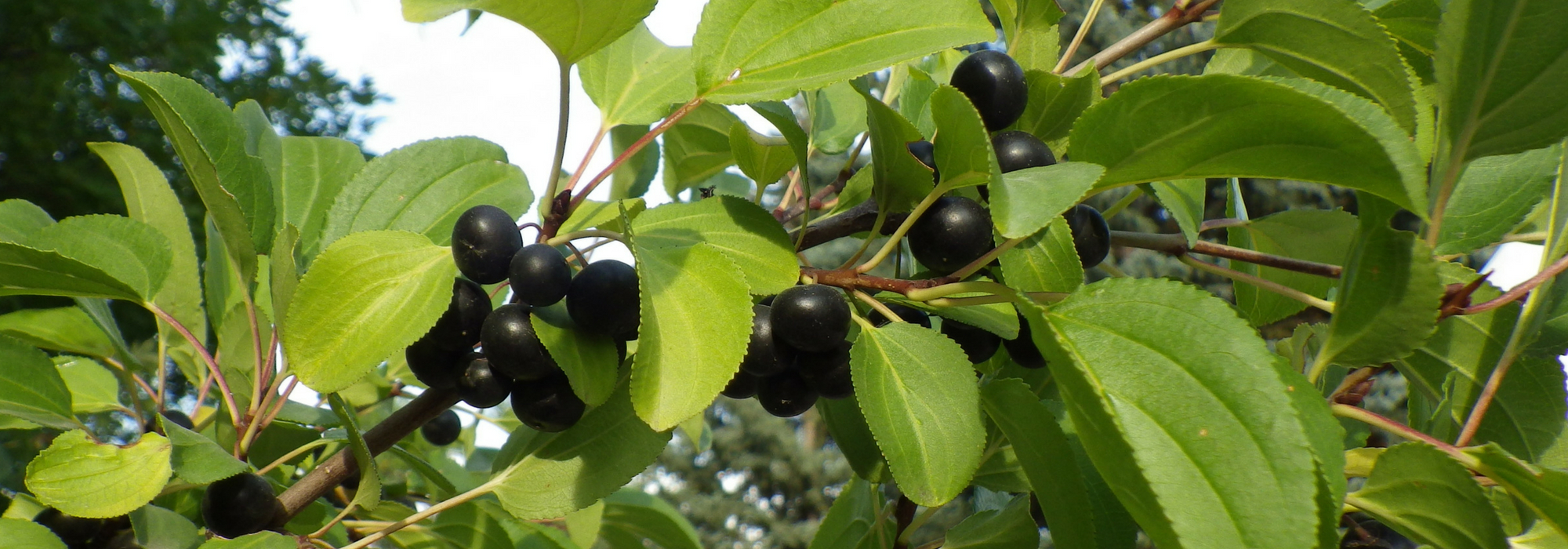
Rhamnus, Buckthorn, Alder: planting, pruning, and maintenance
Contents
Rhamnus in a nutshell
- Rhamnus are evergreen or deciduous bushes that are both delightful and low-maintenance,
- Reaching heights of 1 to 5 m, they quickly form beautiful masses, fragrant during flowering, in full sun or in light woodland, even in shade, in difficult planting areas.
- Perfect bushes for creating free and rustic hedges with no maintenance, they will please both gardeners and wildlife.
- The cultivars offer the advantage of refined, highly graphic foliage with a Japanese effect, suitable for all soils.
A word from our expert
Rhamnus are native bushes, found in edges or undergrowth, often unnoticed by passers-by. They are ubiquitous, discreet, with an insignificant flowering that nonetheless delights bees, and rather mundane foliage that is a feast for many butterfly caterpillars, while their roots take only the space that other trees in the forest are willing to leave them.
Black alder (Rhamnus frangula) is widespread throughout France on rather clay-siliceous (acidic) soils, occupying wet heaths, woods, and marshes. It shows particular tolerance to difficult situations in undergrowth, seasonal drought, and wind, requiring no special attention. It withstands temperatures down to -40°C! The greenish to white flowering, highly melliferous from May to June, produces a renowned honey. This is followed by green, red, and then black berries of 12 mm that appear throughout the summer. The growth is rapid, allowing for the development of a small shade tree up to 4.50 m tall without any difficulty.
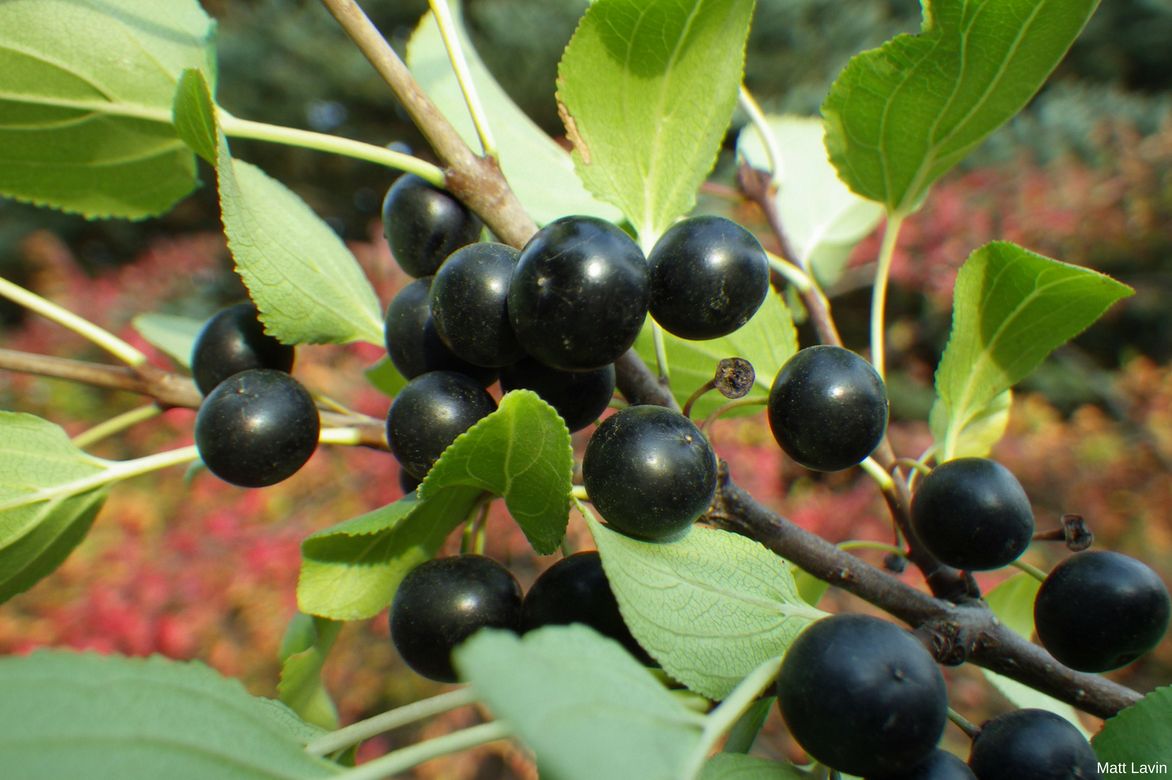 Decorative berries of a Rhamnus cathartica.
Decorative berries of a Rhamnus cathartica.
Italian buckthorn (Rhamnus alaternus) forms a bush 1 to 3 m high (up to 5 m), common around the Mediterranean on rocky and limestone slopes as it enjoys warmth. It is found in garrigue, fallow land, hedges, and at the forest edge, even in the undergrowth of oaks and pines. It is an interesting plant for reforesting burned areas. Widespread in Provence and throughout Languedoc-Roussillon, it extends north to Isère and west into Lot and Dordogne. It has even naturalised in Australia and New Zealand. Flowering occurs from March to May, depending on the climate, in the form of tiny yellowish to greenish flowers, lacking petals, grouped in small clusters at the axil of the leaves. They are not very visible but pleasantly fragrant, attracting many foraging insects. Only female plants, in the presence of male plants, produce these small pretty red berries, highlighted by the light foliage. It produces fleshy fruits that ripen in late spring and early summer, thus representing a significant source of water and nutrients for birds, small mammals (rodents), and ants that ensure seed dispersal. The fruits usually contain 2 or 3 seeds covered by an endocarp that opens when the fruit’s pulp is removed. The buckthorn can live for many years in the garden.
Description and Botany
Botanical data
- Latin name Rhamnus sp.
- Family Rhamnaceae
- Common name Buckthorn, Purging buckthorn, Alatern, Variegated buckthorn, White sloe
- Flowering between March and June
- Height between 1 and 5 m
- Sun exposure sun, partial shade, shade
- Soil type any soil, even dry, stony or even marshy depending on the species
- Hardiness Good to excellent (-10 to -40°C)
The genus Rhamnus includes nearly 125 species of bushes or small trees. It currently includes the genus Frangula (with naked buds without scales, flowers with 4 sepals and bisexual) which notably designated the Buckthorn (Frangula alnus) now known as Rhamnus frangula. The buds can be naked (former genus Frangula) or scaly in Rhamnus in the strict sense. The vernacular names of Purging buckthorn, Alatern or simply Alatern are also attributed to the other main native species. These bushes occupy temperate or subtropical regions of the northern hemisphere, mainly in eastern Asia, North America, and China. The species cultivated here belong to the temperate and southern zones of Europe and North Africa, and they are known to tolerate drought and sea spray. The genus has given its name to the family Rhamnaceae, which includes Ceanothus and Jujubes among others.
The bark is smooth, punctuated with numerous white lenticels on a very dark background in the buckthorn. The purging buckthorn (Rhamnus cathartica) has dwarf branches ending in a thorn. The oval, simple and dentate leaves can exhibit an alternate position (R. alaternus, R. frangula), more or less opposite (R. catharticus) or even fasciculate (in fascicles) on short branches. They are sometimes leathery, evergreen and with more or less cartilaginous dentate edges, in the alatern but most often

Rhamnus frangula – botanical illustration
deciduous as in the buckthorn and the purging buckthorn. The marked veins curve following the edge of the leaves. The foliage with a short petiole measures between 1 and 8 cm long. It is exceptionally finely dissected and undulate in cultivars such as Rhamnus frangula ‘Asplenifolia’ nicknamed the fern-buckthorn and Fine Line ®. The habit is compact and dense in the alatern, rather graceful and airy in the buckthorn, columnar in the cultivar Rhamnus frangula Fine Line ®. The young shoots are often coloured purple in the alatern. The leaves turn red in autumn in the buckthorn and yellow in the purging buckthorn, remain dark green in the Alatern.
The yellowish-green or white flowers are small, quite insignificant but very fragrant, attracting many pollinators between March and June depending on the species. The flowers are solitary or gathered in small clusters and are often unisexual on a dioecious plant (entirely male or female plant), particularly in the alatern. The calyx is cup-shaped or campanulate, with 4 or 5 sepals and the corolla with 4 or 5 petals, absent in the alatern. The flower contains 4 or 5 stamens the size of the petals or shorter or pistils ending in 2 or 3 points. The green to red-black fruits are drupes that resemble berries about 5 mm as they contain several stones with or without a furrow. The fruiting extends throughout the summer season in the buckthorn, giving it a very decorative appearance in the form of small green, red, and black balls.

Foliage of Buckthorn: Rhamnus alaternus ‘Argenteovariegata’ (Photo Gartenknorze), Rhamnus frangula ‘Asplenifolia’ (photo Jonathan Landsman).
The main varieties of Rhamnus
Les espèces indigènes en France se rencontrent en zone tempérée, sur sol calcaire comme the purging buckthorn ou plus souvent dans les heathlands humides, les bois ou dans les marécages comme l’alder buckthorn ou encore sur les coteaux calcaires de Méditerranée même exposés aux embruns comme le buckthorn alaterne. Les Rhamnus tolèrent généralement toutes ces situations, allant du sous-bois sec aux rivages ventés en passant par les talus rocailleux soumis à la sécheresse. Pour faire entrer ces arbustes dans les jardins, les horticulteurs se sont efforcés de sélectionner des formes plus ornementales à feuillage variegated de crème ou laciniate, à port colonnaire de manière à pouvoir décorer les terrasses quels que soient l’exposition et le climat.
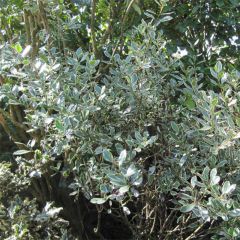
Rhamnus alaternus Argenteovariegata - Italian Buckthorn
- Flowering time April, May
- Height at maturity 3 m
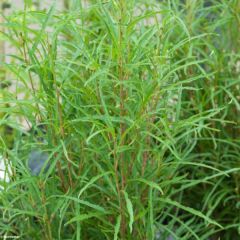
Rhamnus frangula Fine Line - Alder Buckthorn
- Flowering time June, July
- Height at maturity 2,50 m
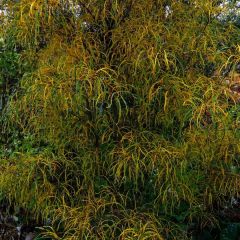
Rhamnus frangula Aspleniifolia - Alder Buckthorn
- Flowering time June, July
- Height at maturity 2,50 m
Discover other Rhamnus
View all →Available in 1 sizes
Available in 2 sizes
Available in 3 sizes
Available in 1 sizes
Available in 2 sizes
Available in 1 sizes
Young plantation
Where to plant Rhamnus?
Plant Rhamnus in ordinary, well-tilled and well-drained soil. The Buckthorn prefers rather calcareous soils, but is really not demanding and adapts to poor, clay-limestone, and stony soils. The alder buckthorn grows in sandy soil that is rather neutral to acidic, from marshy to dry.
Summer drought and high temperatures are not a problem once these bushes are well established. Plant the buckthorn in well-drained soil and sheltered from cold winds to ensure frost tolerance of -12 to -15°C. All are well resistant to sea spray and thrive equally well in coastal areas. In urban settings, they cope well with air pollution.
Install them in full sun or, if not possible, in partial shade. The Buckthorn even tolerates a shaded position in dry and hot climates.
When to plant?
Preferably plant Rhamnus in autumn to ensure deep rooting before facing summer drought. In cooler and wetter climates, spring planting is also suitable. Potted shrubs can be planted at any time, but avoid periods of frost or intense drought.
How to plant?
To plant a Rhamnus:
- Soak the root ball in a bucket of water to thoroughly moisten it.
- Dig a planting hole 50 cm wide in all directions or a trench in the case of a hedge.
- Add a 10 cm drainage layer (gravel, sand…) if your soil is clayey.
- Add well-rotted manure or compost or potting soil if the earth is poor.
- Place the plant in the planting hole so that the top of the root ball is level with the soil.
- Replace the soil and lightly compact it.
- Water.
- Spread a layer of gravel at the base to maintain good moisture around the roots. This will also limit weed growth and promote drainage.
Recovery is easy and quick, requiring one or two generous waterings per week.
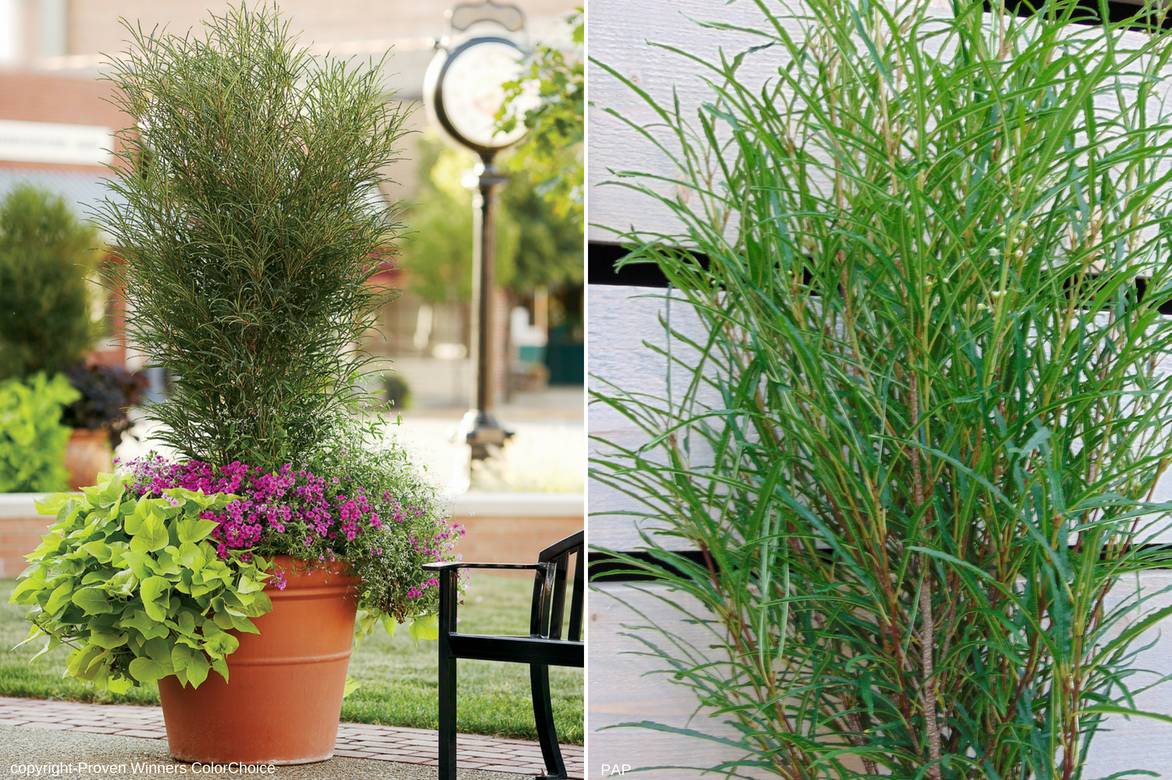
The Rhamnus frangula ‘Fine Line’ is well suited for pot cultivation.
Entretien et taille
Water only twice a month from the third year onwards, and only in case of drought. This is a plant that requires very little maintenance and grows easily as long as the necessary conditions are met. Fertiliser is not essential (just add a bit of horn at the bottom of the planting hole), but it can be useful in very poor soil.
Pruning is not essential. You can lightly trim the stems after flowering to encourage the plant to branch out. Avoid severe pruning. On variegated forms, if you notice the appearance of stems with green leaves, remove them.
Pot culture:
Use a light substrate, a mix of garden soil, coarse sand and potting soil. In summer, water only when the soil is dry, thoroughly, but spreading out the waterings. The plant can be stored in a cool, bright place that is little or not heated, protected from severe frosts. Add a bit of slow-release fertiliser in spring and autumn.
Multiplication
Multiply Rhamnus by sowing, layering, or propagation by cuttings.
Propagation by Cuttings
- Take tip cuttings from herbaceous shoots in spring or semi-ripe cuttings in late summer which you insert into a mixture of sand and potting soil.
- Winter under a cold frame.
- Plant out in the ground in the following spring or autumn.
Layering
- Choose a long flexible shoot, burying the central part while holding it in place with a hook in the soil.
- Lightly scrape the bark of the buried section to encourage the growth of rootlets.
- Wait 1 or 2 years before separating the layer from the parent plant.
Sowing
- Harvest the fruits of buckthorn as soon as they are black in late summer to autumn.
- Separate the seeds from the pulp and rinse them.
- Sow them in a pot filled with sand placed outside, against a north-facing wall.
- Germination occurs in the following spring or the year after. Transplant the 6-month-old plants directly in place.
Uses and associations
Buckthorn is typical of rather humid or even marshy undergrowth, in deep, acidic, clayey-sandy and clay soils, but it also grows in drier areas regardless of pH. It is a pioneering species in sandy and semi-peaty soils where it can make a good windbreak.
Horticultural forms such as Rhamnus frangula Fine Line and ‘Asplenifolia’ produce very original laciniate foliage that takes on a lovely golden hue in autumn. They can be planted in a large bed beneath a taller tree to elegantly dress its trunk. Their highly cut silhouette offers a beautiful Japanese effect without the usual soil constraints of the Japanese Maple, which requires acidic soil. The columnar habit of Fine Line gives it a proud appearance in a large pot accompanied by low perennials or simply in a free hedge or a large bushy bed alongside Physocarpus, privets, spindle trees, serviceberries, Elaeagnus commutata Zempin, laurustinus… Moreover, the berries of these bushes will attract birds that are fond of them to your garden.
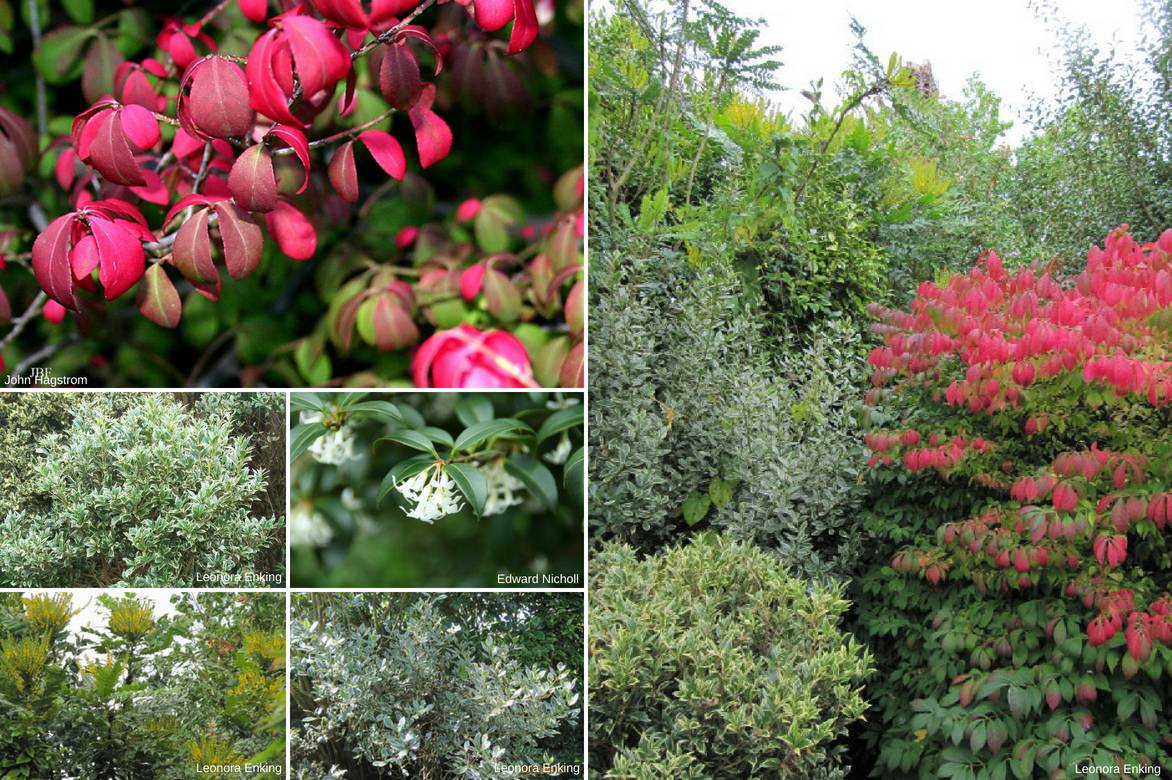
An example of pairing: Euonymus alatus ‘Compactus’, Osmanthus heterophyllus ‘Variegata’, Osmanthus burkwoodii, Mahonia ‘Lionel Fortescue’ (the Mahonia ‘Winter Sun’ is a close variety with its long, sweet yellow inflorescences), Rhamnus alaternus ‘Argenteovariegata’.
In the Alaternus, only female plants are capable of producing berries. The variegated white-leaved form of Rhamnus alaternus Argenteovariegata is one of the prettiest drought-tolerant shrubs for shaded areas. Both elegant, bright, and dense, attractive all year round and of slow growth, it is perfectly suited to those particularly challenging areas to landscape, such as undergrowth filled with roots and coastal gardens, directly exposed to sea spray. This variegated buckthorn, a true all-terrain shrub, is widely planted by landscape professionals in the South of France, as well as in Portugal and Spain. Forming a bright silver mass, with good hardiness down to -10°/-12°C in well-drained soil, perfectly self-sufficient once established, the variegated buckthorn is a beautiful subject to plant in a hedge or in a bed of easy-care shrubs in a mild climate, or even in isolation, at the corner of a grove of small trees, for example. It is part of a group of essential shrubs, including Filaria, Pistacia lentiscus, laurustinus, Myrtus tarentina Variegata, and strawberry trees, to create the persistent structure of a drought-tolerant garden, even among the roots of oaks or pines.
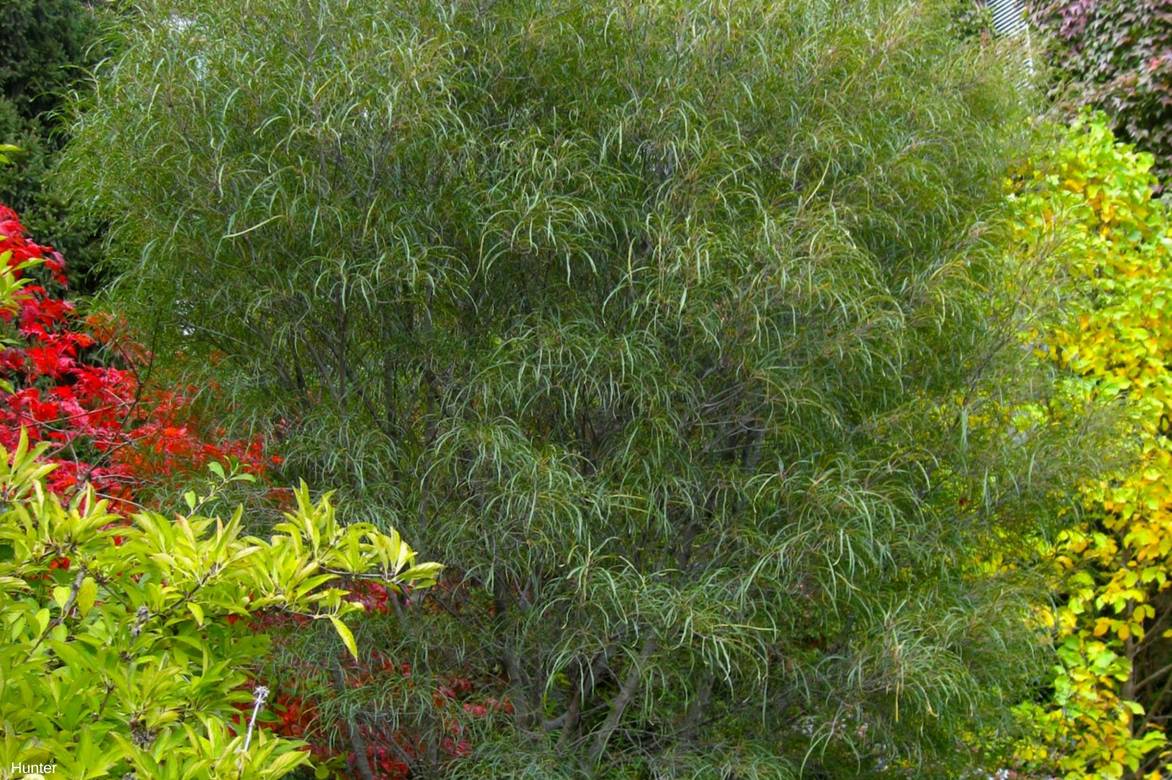
An idea for pairing that plays on the shapes and colours of foliage: Rhamnus frangula ‘Aspenifolia’ accompanied by golden foliage (Sambucus nigra ‘Aurea’ for example) and autumn colours (Euonymus alatus, Corylopsis paucifolia, Cornus, etc.).
Did you know?
The berries of buckthorn (Rhamnus frangula) and purging buckthorn (Rhamnus cathartica) have a purgative effect and are used in the production of laxative medications. However, their raw consumption is not recommended due to the sometimes violent effects.
Buckthorn honey is renowned for its delicate aromas and its fruity, balsamic, and very lightly flavoured taste.
The flexible branches of buckthorn were used in basketry, particularly for making beehives, and its charcoal was used in the production of gunpowder, hence its nickname “powder wood”. The wood of buckthorn is employed in cabinetmaking.
The fruits and branches of purging buckthorn were harvested, particularly in Comtat Venaissin (Carpentras), to obtain yellow, yellow-green, and brown dyes, such as bladder green used in the Fine Arts or for dyeing fabrics. The Lemon butterfly and the Azure of buckthorns are among the hosts of buckthorn, making the bush essential for their survival.
The species cathartica, introduced in North America, has become invasive in Quebec. Buckthorn has also naturalised in the region.
- Subscribe!
- Contents
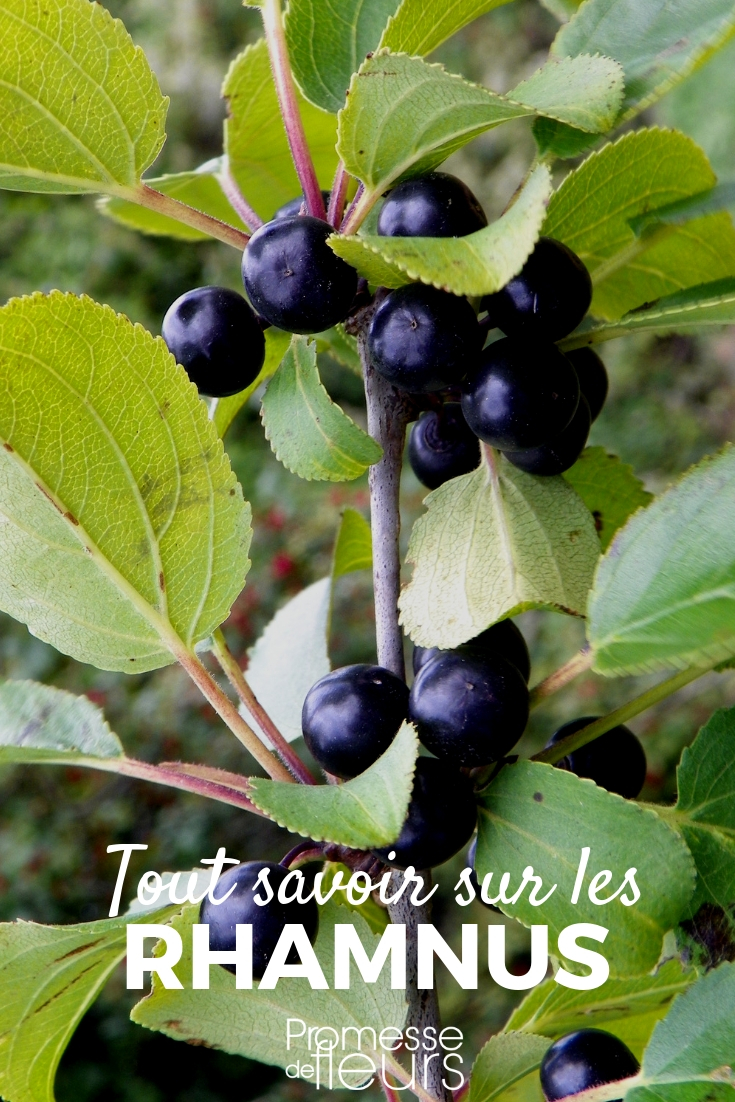


































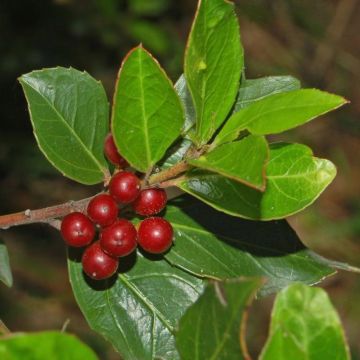
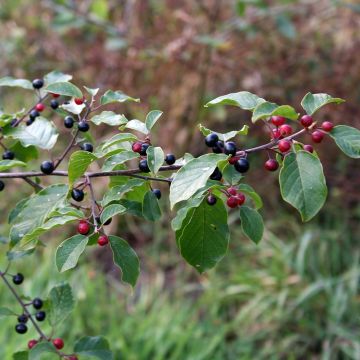
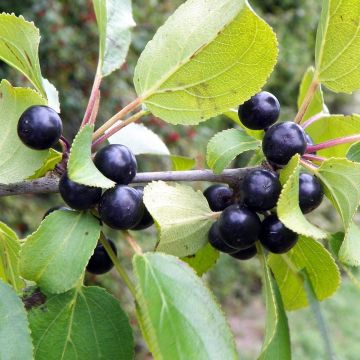
Comments